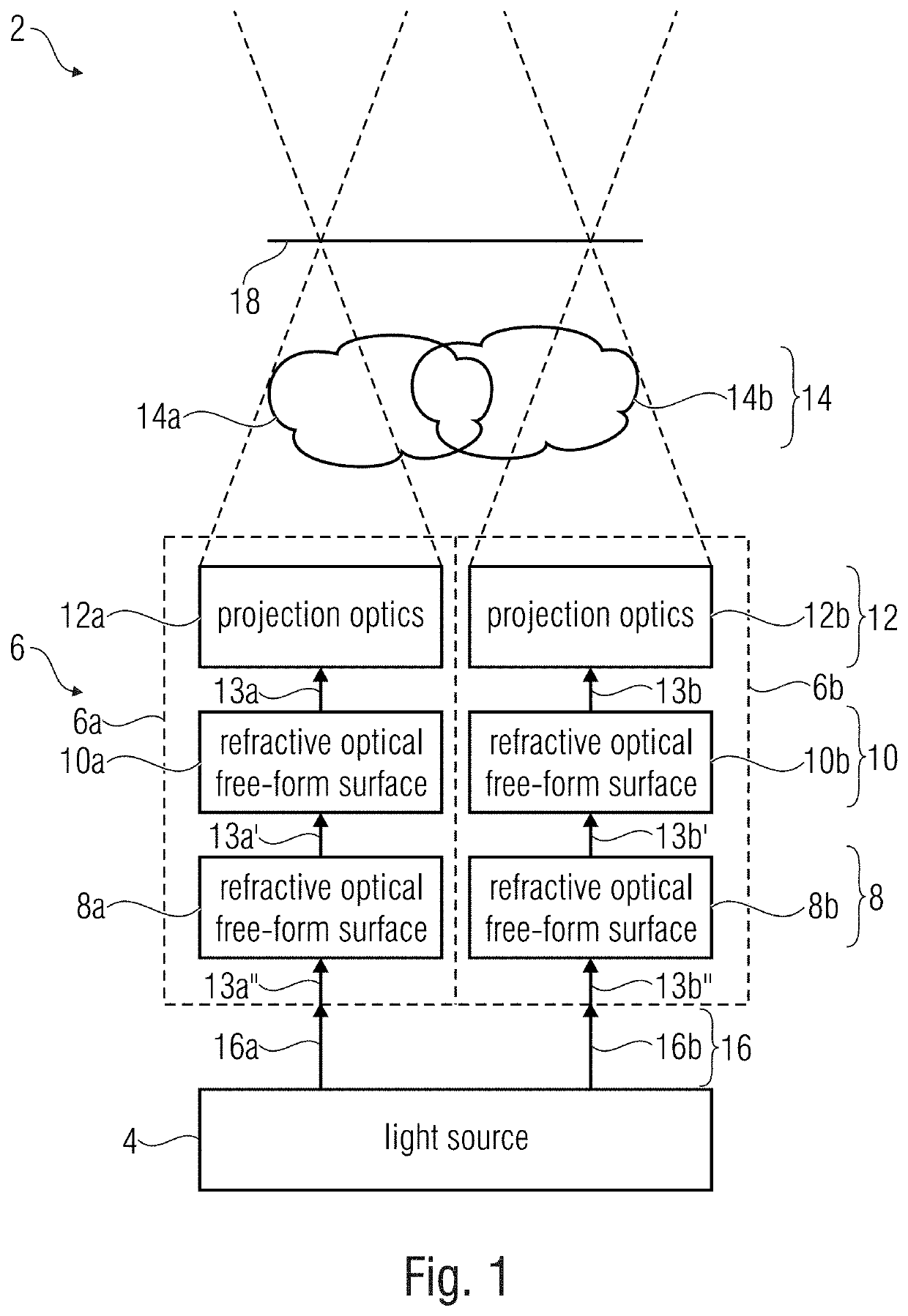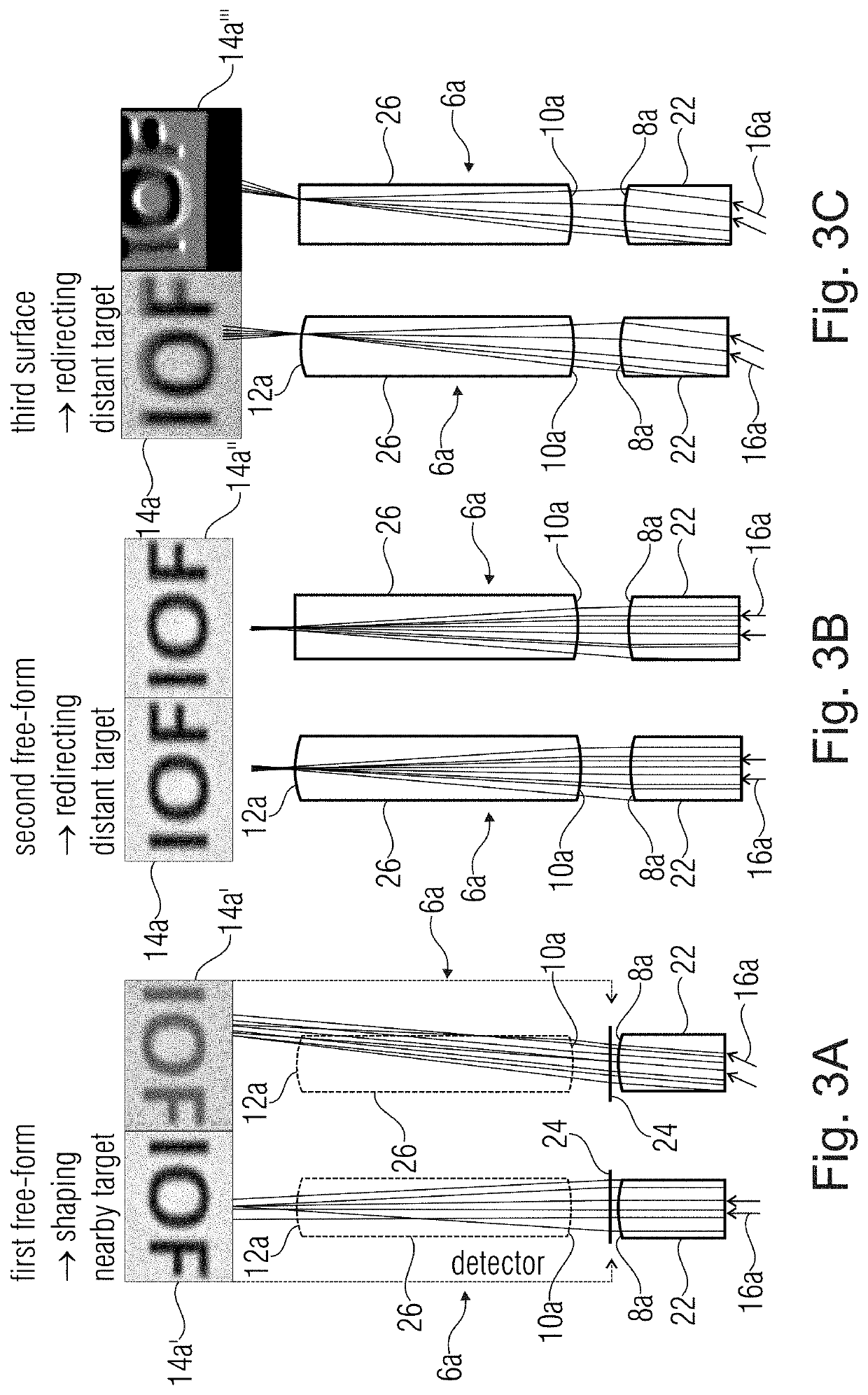Projection device and method for projection comprising optical free-form surfaces
a projection device and free-form surface technology, applied in the direction of picture reproducers, lighting and heating apparatus, instruments using projection devices, etc., can solve the problems of considerable power efficiency loss, limited resolution in light distribution generation for realistic source distribution, and application of this type of free-form redistribution exhibit considerable deficiencies, so as to reduce the lossy fading of light, improve the power transmission of optics, and improve imaging quality
- Summary
- Abstract
- Description
- Claims
- Application Information
AI Technical Summary
Benefits of technology
Problems solved by technology
Method used
Image
Examples
Embodiment Construction
[0058]Same elements or elements of equal effect will be provided with same reference numerals in the following description of the figures so that the description thereof is mutually exchangeable between the different embodiments.
[0059]In accordance with embodiments, the object of the invention is providing an ultra-thin high-efficiency optical element for generating patterned illumination or for a projection with a potentially large light flux, wherein additionally a homogenization effect / color mixture of the source radiation takes place. Light distributions on real and / or virtual targets having most different structural features (like fine patterns of high resolution, high contrasts etc.) are to be made possible.
[0060]FIG. 1 shows a schematic block diagram of a projection device 2 comprising at least one light source 4 and an array of optical channels 6, 6a, 6b. Each channel comprises a first refractive optical free-form surface 8a, 8b and a second refractive optical free-form surf...
PUM
| Property | Measurement | Unit |
|---|---|---|
| refractive optical | aaaaa | aaaaa |
| light-transparent | aaaaa | aaaaa |
| optical structures | aaaaa | aaaaa |
Abstract
Description
Claims
Application Information
 Login to View More
Login to View More - R&D
- Intellectual Property
- Life Sciences
- Materials
- Tech Scout
- Unparalleled Data Quality
- Higher Quality Content
- 60% Fewer Hallucinations
Browse by: Latest US Patents, China's latest patents, Technical Efficacy Thesaurus, Application Domain, Technology Topic, Popular Technical Reports.
© 2025 PatSnap. All rights reserved.Legal|Privacy policy|Modern Slavery Act Transparency Statement|Sitemap|About US| Contact US: help@patsnap.com



